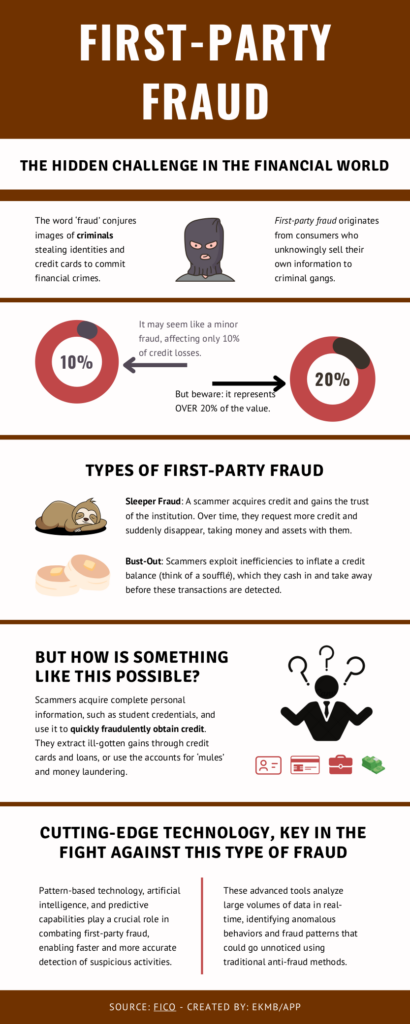Lessons to Be Drawn from Household Debt
GDS Modellica
16/08/2023
We never tire of taking a look at available information on credit activity, as it provides trends and reveals insights present in the various markets in which we operate. A better understanding of the credit market is a guarantee to offer more personalized, flexible, inclusive, and sustainably integrated financial solutions.
One of the most relevant sources in this regard is the New York Federal Reserve Bank’s Household Financial Health Index (HHDC). The HHDC measures the financial health of American households, crucial for understanding refinancing capabilities and strategies of financial entities in that context. This index is based on a household survey that inquires about their income, expenses, assets, and debts.
The behavior of American households, particularly those in New York, cannot be directly applied to other international markets due to differences in economic policies, monetary culture, and financial education in other parts of the world. However, analyzing possible approaches that can be applied to this context helps gauge to what extent solutions like those provided by GDS Modellica are scalable, irrespective of the regional peculiarities of each market.
With Assets, but Not Overly So
In the latest HHDC report, with consolidated data from 2022, there are findings indicating an improvement in the financial health of New York households in recent years. However, there are also numerous cases of financial stress within millions of families. It’s important to note that, on average, households in New York are not as affluent as American households in general. According to the same source (the New York Federal Reserve Bank), the average net worth of households in NYC was $1.1 million in 2022.
While this figure is higher than the national average, it is still lower than that of some other major cities, such as San Francisco and Boston. Among the reasons for this contrast are the notably higher cost of living around Manhattan and the existence of many low-income households, predominantly with a population that, due to their characteristics, has fewer opportunities to progress on the economic and social scale.
Asset growth, in any case, is significant. However, the volume of debt accumulated by New York households is something that warrants special attention. Since the first quarter of 2014, mortgage debt has continued to grow and is now 50% higher than it was then, accelerating since 2020. To put it in numbers, New Yorkers owed $12.38 trillion at the beginning of this year. Non-mortgage household debt growth is even more striking: a 63.6% increase from the value of $2.77 trillion nine years ago, to $4.66 trillion at the start of 2023.
The behavior of American households, particularly those in New York, cannot be directly applied to other international markets due to differences in economic policies, monetary culture, and financial education in other parts of the world. However, analyzing possible approaches that can be applied to this context helps gauge to what extent solutions like those provided by GDS Modellica are scalable, irrespective of the regional peculiarities of each market.
With Assets, but Not Overly So
In the latest HHDC report, with consolidated data from 2022, there are findings indicating an improvement in the financial health of New York households in recent years. However, there are also numerous cases of financial stress within millions of families. It’s important to note that, on average, households in New York are not as affluent as American households in general. According to the same source (the New York Federal Reserve Bank), the average net worth of households in NYC was $1.1 million in 2022.
While this figure is higher than the national average, it is still lower than that of some other major cities, such as San Francisco and Boston. Among the reasons for this contrast are the notably higher cost of living around Manhattan and the existence of many low-income households, predominantly with a population that, due to their characteristics, has fewer opportunities to progress on the economic and social scale.
Asset growth, in any case, is significant. However, the volume of debt accumulated by New York households is something that warrants special attention. Since the first quarter of 2014, mortgage debt has continued to grow and is now 50% higher than it was then, accelerating since 2020. To put it in numbers, New Yorkers owed $12.38 trillion at the beginning of this year. Non-mortgage household debt growth is even more striking: a 63.6% increase from the value of $2.77 trillion nine years ago, to $4.66 trillion at the start of 2023.

Guidelines for a Sustainable Financial Environment
In a context like this, it’s worth revisiting some “basics” of the banking sector to ensure that debt of this magnitude doesn’t turn into a spiral of defaults and liquidity shortages.
This is where companies like GDS Modellica provide their maximum value, by offering cutting-edge technological tools to financial institutions, optimizing these operations, avoiding business disruptions, or generating friction with the end consumer.
Commitment and Mission
The commitment to offer better solutions every day to ensure recovery, increase origination efficiency, and put a stop to fraud in lending activities is a commitment to a more evenly distributed financial society. It enables the design of flexible, agile, and useful proposals so that consumers can enjoy more open financial possibilities without jeopardizing the financial stability of the sector.
That is our mission: to understand the markets, identify their patterns, and make ourselves available to society as a whole to offer win-win scenarios in which everyone benefits. In New York, Europe, or Asia, with more or less inflation, and always with an eye on the digital transformation of businesses and citizens.
In a context like this, it’s worth revisiting some “basics” of the banking sector to ensure that debt of this magnitude doesn’t turn into a spiral of defaults and liquidity shortages.
- Conduct thorough due diligence of applicants. This includes verifying their income, credit history, and employment.
- Use fraud detection tools. These tools can help identify applicants who are more likely to commit fraud.
- Collect complete documentation from applicants. This includes documents such as their passport, driver’s license, and tax statements.
- Implement a robust origination process. This process should include steps to verify the applicant’s identity, assess their ability to repay, and obtain their consent for the loan.
- Follow an effective collection process. This process should include steps to contact the debtor, negotiate a repayment plan, and, if necessary, take legal action.
This is where companies like GDS Modellica provide their maximum value, by offering cutting-edge technological tools to financial institutions, optimizing these operations, avoiding business disruptions, or generating friction with the end consumer.
Commitment and Mission
The commitment to offer better solutions every day to ensure recovery, increase origination efficiency, and put a stop to fraud in lending activities is a commitment to a more evenly distributed financial society. It enables the design of flexible, agile, and useful proposals so that consumers can enjoy more open financial possibilities without jeopardizing the financial stability of the sector.
That is our mission: to understand the markets, identify their patterns, and make ourselves available to society as a whole to offer win-win scenarios in which everyone benefits. In New York, Europe, or Asia, with more or less inflation, and always with an eye on the digital transformation of businesses and citizens.

Latest Articles
Request Demo








